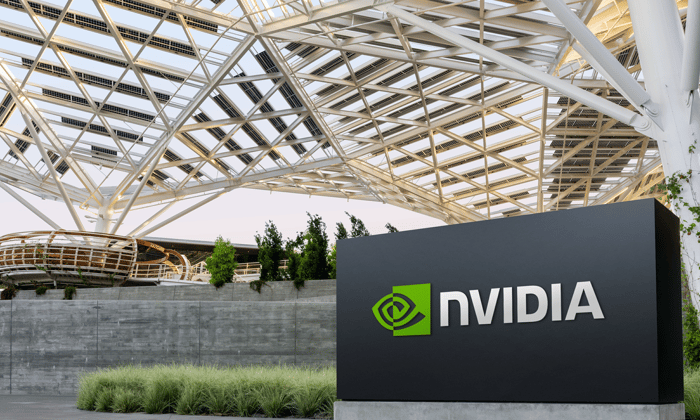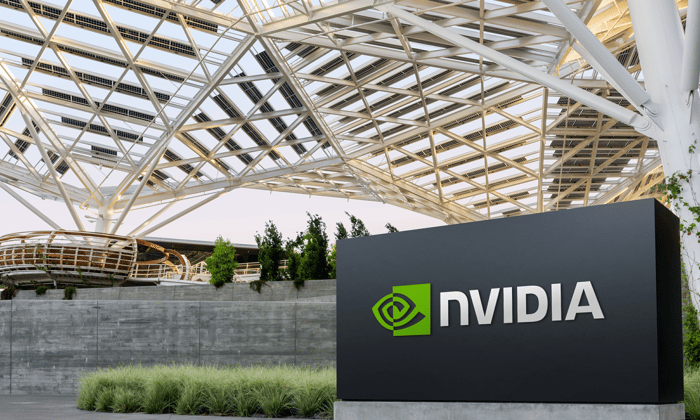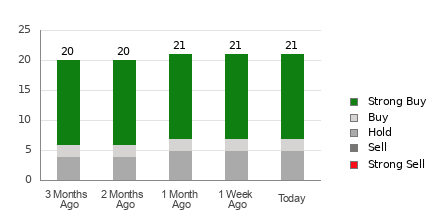Nvidia Stock Faces Challenges Amid AI Developments
Nvidia (NASDAQ: NVDA) stock is currently down 12% from its peak. This decline followed a sharp sell-off in January when China-based start-up DeepSeek claimed it had trained a competitive artificial intelligence (AI) model with significantly less computing power than U.S. leaders like OpenAI.
Concerns arose among investors that DeepSeek’s innovations could be adopted by other AI developers, resulting in a major reduction in demand for Nvidia’s top-tier graphics processing units (GPUs), which are essential for AI model development. However, this anxiety may be overstated.
Where to invest $1,000 right now? Our analyst team just revealed what they believe are the 10 best stocks to buy right now. Learn More »
Alphabet (NASDAQ: GOOG)(NASDAQ: GOOGL) is a major purchaser of Nvidia’s AI data center chips. On February 4, CEO Sundar Pichai provided comments that should reassure Nvidia investors.

Image source: Nvidia.
The Rise of DeepSeek
DeepSeek, founded in 2023 by the successful Chinese hedge fund High-Flyer, has utilized AI for trading algorithms for several years. In December 2024, DeepSeek unveiled its V3 large language model (LLM), followed by its R1 reasoning model in January. These developments generated excitement in the tech sector due to their competitiveness with notable models from OpenAI and other emerging firms.
With DeepSeek’s work being open source, the industry gained insight into its significant claims. The start-up reports having trained V3 for just $5.6 million (not accounting for an estimated $500 million in chips and infrastructure according to SemiAnalysis), a fraction compared to the tens of billions spent by companies like OpenAI to achieve their current levels.
Due to a U.S. government ban preventing chip sales to China, DeepSeek relied on previous generations of Nvidia’s GPUs, such as the H100. They compensated for the reduced hardware power by implementing unique software innovations, including efficient algorithms and a method known as distillation. This technique uses insights from an advanced AI model to train a smaller one, speeding up the training process and reducing the need for extensive data collection and computing power.
OpenAI has even suggested that DeepSeek’s R1 model may have been trained using its GPT-4o outputs, highlighting concerns among investors. If other AI developers adopt such methods, demand for Nvidia’s chips could plummet.
Nvidia Sets Sights on Record Sales
Nvidia is set to announce its financial results for fiscal 2025, which concluded on January 31, on February 26. The company anticipates generating $128.6 billion in revenue, marking an impressive 112% increase from the previous year. Projections indicate that approximately 88% of this revenue will come from its data center segment, largely due to booming GPU sales.
Wall Street analysts, per Yahoo’s consensus forecast, suggest Nvidia may achieve another milestone in fiscal year 2026, with an estimated total revenue of $196 billion. This projection hinges on sustained demand for GPUs from AI developers, explaining the heightened anxiety over the DeepSeek situation.
The H100 continues to perform well, while Nvidia’s latest GB200 GPU based on Blackwell architecture can conduct AI inference at speeds up to 30 times faster. Inference is the stage where an AI model processes real-time data to provide outputs, occurring after the initial training.
Demand for the GB200, launched at the end of 2024, was notably higher than supply, solidifying its status as the benchmark in AI data centers.

Image source: Alphabet.
Pichai’s Positive Insights
During a conference call on February 4, Pichai discussed Alphabet’s Q4 2024 results, citing a significant shift in computing power allocation over the last three years, with a rise in resources devoted to inference rather than training.
Pichai noted that new reasoning models like DeepSeek’s R1 and Alphabet’s Flash Thinking models will further enhance this trend. These models utilize more computing power due to their extended “thinking” process before generating responses. The concept of test-time scaling allows AI to provide more accurate information without the need for constant pre-training with new data.
Meta Platforms’ CEO Mark Zuckerberg echoed similar sentiments, emphasizing that reduced training workloads won’t necessarily decrease chip demand, as the focus shifts to inference.
Furthermore, Alphabet aims to allocate $75 billion for capital expenditures in 2025, sharply increasing from $52 billion in 2024. This strategy indicates that the company is committed to expanding its data center capabilities and chip purchases.
In conclusion, Nvidia’s outlook for GPU demand appears robust despite market concerns. With its stock at an appealing valuation, this recent dip could present a buying opportunity for investors.
Seize This Potential Investment Opportunity
If you feel you missed out on investing in top stocks, now might be your chance.
Occasionally, our expert analysts provide a “Double Down” stock recommendation for companies poised for growth. If you fear you’ve missed your window, now may be the right moment to invest based on compelling opportunities:
- Nvidia: investing $1,000 in 2009 would amount to $360,040!
- Apple: investing $1,000 in 2008 would generate $46,374!
- Netflix: investing $1,000 in 2004 would now be worth $570,894!
We are currently issuing “Double Down” alerts for three exceptional companies, presenting a rare opportunity.
Learn more »
*Stock Advisor returns as of February 3, 2025
Randi Zuckerberg, a former director of market development and spokeswoman for Facebook and sister to Meta Platforms CEO Mark Zuckerberg, serves on The Motley Fool’s board of directors. Suzanne Frey, an executive at Alphabet, also serves on The Motley Fool’s board of directors. Anthony Di Pizio has no stake in the mentioned stocks. The Motley Fool owns shares in and recommends Alphabet, Meta Platforms, and Nvidia. A full disclosure policy is available.
The views expressed in this article are solely those of the author and do not necessarily reflect the views of Nasdaq, Inc.









